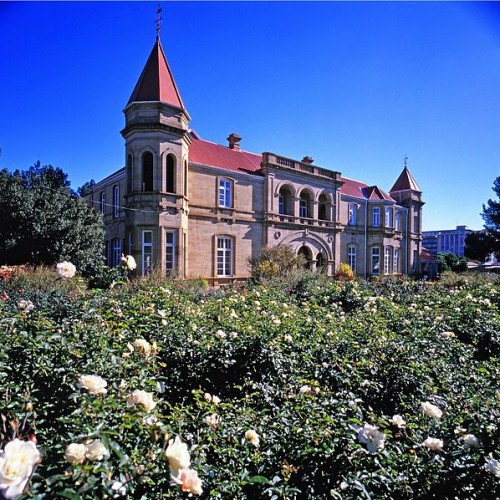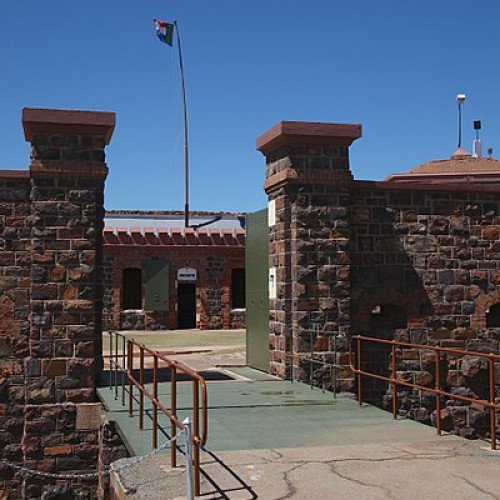Castles of "South Africa" OLD PRESIDENCY vs PRETORIA FORTS

OLD PRESIDENCY
The Old Presidency or Ou Presidensie (Afrikaans) is a museum, art gallery and theatre in the city of Bloemfontein, South Africa, located on President Brand Street in the heart of the city. The former residence of the President of the Republic of the Orange Free State from 1886 until 1899 when the city fell to the British Empire during the Second Anglo-Boer War. A trekboer family with the surname of Brits settled on the site in the 1820s and built a thatched A-frame dwelling for themselves. Major Henry Douglas Warden (then the British resident for the area north of the Orange River) purchased it from the Brits family in 1846. The thatched-house built by the Brits family was demolished and the house he (Warden) erected began as a small farm building which was made out of sun-dried bricks. It is referred to as a 'nederige kleihuis' (Afrikaans for humble clay-house). In 1854, The British Government abandoned the Orange River Sovereignty and the Boer Republic then took over the residence. This independence saw the new presidents of the republic take up quarters in the "Residency", reportedly Presidents Josias Philip Hoffman, Jacobus Nicolaas Boshoff and Marthinus Wessel Pretorius. They all lived in the dwelling during their terms in office. In 1860, the Volksraad (The parliament of the former Orange Free State Republic, which existed from 1857 to 1902) approved plans for a new Presidency house. At that time, the Volksraad could only afford £800 for the restoration of the old residency. Additional repairs were carried out in 1864 and 1874.
Statistics for this Xoptio

PRETORIA FORTS
The Pretoria Forts consists of four forts built by the government of the South African Republic (ZAR) just before the outbreak of the Second Anglo-Boer War around their capital of Pretoria. After the abortive Jameson Raid, the government of the ZAR became concerned about the safety of its capital city, Pretoria, both from foreign invasion as well as from the growing number of Uitlanders (Foreigners) on the Witwatersrand. Consequently, a defence plan for Pretoria was drawn up by a former French artillery officer, Léon Grunberg. This plan was approved on 24 March 1896 by the Executive Council of the ZAR. The plan recommended that eight strategic positions around the city should be fortified by means of armoured turrets equipped with artillery. The positions identified were Schanskop, Kwaggaspoort, Daspoortrand, Magaliesberg-wes, Wonderboompoort, Derdepoort, Strubenkop and Klapperkop. The armoured turrets were subsequently found to be unacceptable, and thus the plan of two German engineers, Otto Albert Adolph von Dewitz and Heinrich C Werner to build forts instead, were accepted. However, due to a lack of money, only four forts were eventually built.